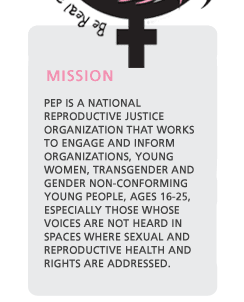Nearly all American women will use contraception at some point in their lives. Birth control is the most effective way to lower the unintended
pregnancy rate, and the best way to decrease the abortion rate. But in an
increasingly polarized political debate about abortion rights, anti-contraception
sentiments have crept in. Sometimes they are blatant -- earlier this June for
example, anti-choice groups sponsored a national day of protest against the
birth control pill. But usually, they are more insidious and come in the form
of systematically and routinely denying women access to contraception. The
grounds of the reproductive rights debate are shifting -- and most Americans
don't seem to know it.
For the last three and a half decades, the big battle in women's health has
been abortion. Anti-choice activists attack Roe v. Wade at every turn and
purposefully chip away at abortion rights. But as anti-choice groups expand
their net to oppose basic birth control, they have a helping hand in the myriad
political, financial and practical access issues that American women face in
trying to prevent unwanted pregnancy.
 The average American woman spends about three decades of her life trying to
avoid pregnancy, and only a few years trying to become or being pregnant. And
while the general belief is that contraception is only a pharmacy away, the United States
still has one of the highest unintended pregnancy rates in the developed world.
Why is it that in a country where 99 percent of women will use contraception at
some point in their lives, nearly half will have an unintended pregnancy?
According to the Guttmacher Institute, a research organization for sexual and
reproductive health, one of the major contributing factors is simply a lack of
access -- economic gaps, racial disparities and insurance status all play a
role in determining women's access to birth control. And they all seem to have
slipped under the public radar. The average American woman spends about three decades of her life trying to
avoid pregnancy, and only a few years trying to become or being pregnant. And
while the general belief is that contraception is only a pharmacy away, the United States
still has one of the highest unintended pregnancy rates in the developed world.
Why is it that in a country where 99 percent of women will use contraception at
some point in their lives, nearly half will have an unintended pregnancy?
According to the Guttmacher Institute, a research organization for sexual and
reproductive health, one of the major contributing factors is simply a lack of
access -- economic gaps, racial disparities and insurance status all play a
role in determining women's access to birth control. And they all seem to have
slipped under the public radar.
While the anti-choice movement and its allies in office attack reproductive
rights through policy, and while legislation like the Deficit Reduction Act
jacks up birth control prices, what goes unnoticed is the fact that many
American women are fighting a battle on the ground -- in their everyday lives
-- in a struggle to simply acquire appropriate reproductive health care.
Katharine O'Connell, an assistant clinical professor of OB/GYN at ColumbiaUniversityMedicalCenter
who also works at Columbia's
Title X-funded family planning clinic, said that something as simple as getting
an appointment can be a barrier to women's access. A recent Guttmacher study
found that significant life changes for women, such as moving, can create gaps
of time without contraception use, which in turn lead to an increased risk of
unintended pregnancy. If a newly relocated woman finds a clinic in her city,
for example, she may have to wait as long as six months before she actually
sees a doctor.
When she finally does get an appointment, the waiting time at a clinic is
often several hours. "This means time off from school, time off from work
that many women can't afford to take," O'Connell said. And the first
question asked at a health clinic usually concerns health insurance. Many
centers, O'Connell said, won't see women who don't have insurance, and many
private offices won't even see women who are on Medicaid.
According to the National Institute for Reproductive Health's Low-Income
Access Program, an organization that works toward increasing access to
reproductive health care for women who face financial barriers, Medicare is the
largest source of public funding for family planning in the country -- more
than 7 million women rely on Medicaid for birth control, gynecological services
and STI testing and treatment. In fact, 70 percent of adults on Medicaid are
women.
Low-Income Access Program Director Myra Batchelder said that while Medicaid
is a huge resource for contraception coverage, each state's program is
different, and each state throws up a variety of barriers. For example, while
emergency contraception (EC) is available over the counter in the United States,
EC covered by Medicaid is not. "This can cause a large burden for women
that depend on Medicaid. In order to obtain a prescription from their doctor,
women may need to wait additional hours or even days, which can cause a major
delay in accessing a drug that is most effective the sooner it is taken,"
Batchelder said. Their alternative is to pay $40 to $50 out of pocket, which
for many is simply not an option.
Another difficulty is that many women don't meet the requirements to qualify
for Medicaid. This includes young women who don't have children or who don't
make the cut financially, O'Connell said: "When states have an allocation
of resources, they're going to give it to the people who need it the
most."
Insurance status is also a widely ignored issue when it comes to
contraception access for women of color. The Pro-Choice Public Education
Project (PEP) recently conducted research on contraception use among women of
color, studying the trends and perceptions among 1,000 Asian, African American
and Hispanic participants. While the majority of the women surveyed believed
that contraception was accessible, insurance was a major factor: Women without
insurance were less likely to feel that they had the ability to obtain
contraception. "As reproductive justice activists, we need to think more
about how the type of health insurance you have affects the access that young
women, especially women of color, have to reproductive health services,"
Executive Director Aimee Thorne-Thomsen said.
And amidst these obstacles, anti-contraceptive activists attack women's
access to contraception on every other level: President George W. Bush's
Deficit Reduction Act (DRA) of 2006 bars pharmaceutical companies from selling
birth control at a discounted price to university health centers and safety-net
clinics, leaving low-income and college women paying full price for birth
control; the United States Conference of Catholic Bishops and others have been
actively opposing the Equity in Prescription Insurance and Contraceptive Coverage
Act, a bill that would require health insurance plans to include contraception;
the American Life League recently launched a new campaign, "The Pill
Kills!" targeting birth control in claims that taking the pill is
equivalent to having an abortion. Most recently, 80 conservative groups sent a
letter to the current administration requesting that Bush impose a
"domestic gag rule," which would cut Title X family planning funding
to clinics that provide abortion services, putting a huge number of family
planning centers out of business (Title X funds already do not pay for
abortion).
So while organizations like PEP and the National Institute for Reproductive
Health are working hard to help women on the ground, it's going to be a long
road before contraception is available to everyone. O�Connell said the internet
allows women to inform themselves and become their own heath advocates, but a
change in the presidential administration in November could play a significant
role in improving women's access to contraception.
And perhaps one day, birth control actually will be only a pharmacy away.
"Before I retire, one of the goals that I hope for is that we're going to
see birth control over the counter," O�Connell said. "I think that's
a step in the right direction."
Vanessa Valenti is a New York-based freelance writer and
an editor at Feministing. This article was originally published at Alternet.
Photograph by Alexandra Lee. | 





